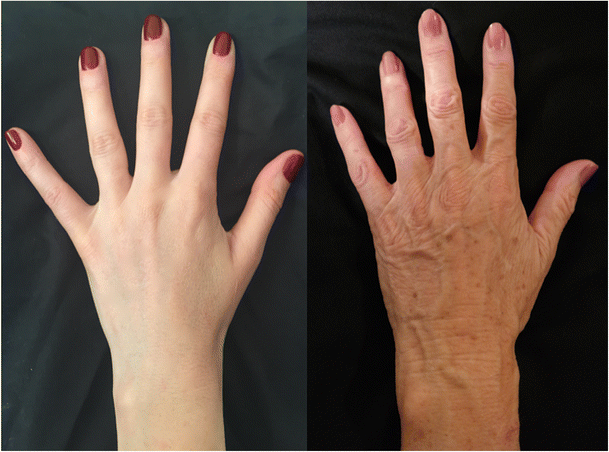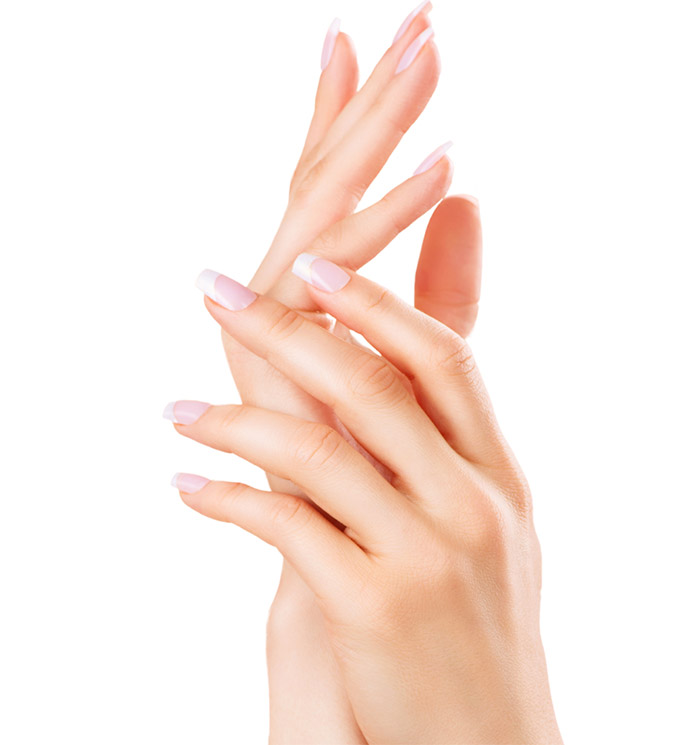Arm sculpting and hand rejuvenation are gaining popularity in the beauty world. Historically, these facial skin rejuvenation treatments were reserved for the elite but have become accessible to many, including ultimate hand rejuvenation and youthful hand revitalization through hand rejuvenation consultation. Today, people seek ways to enhance their arms and hands for a more youthful appearance.
Sculpting techniques focus on toning muscles, improving skin texture, and addressing hand aging and hand rejuvenation surgery. Hand rejuvenation addresses signs of aging like wrinkles and sunspots. These procedures can boost confidence and improve overall aesthetics. With advancements in technology, achieving toned arms and youthful hands is easier than ever. Explore how these treatments can transform your look and elevate your self-esteem.
Key Takeaways
-
Arm sculpting and hand rejuvenation can enhance your appearance, making your arms and hands look toned and youthful.
-
Consider hand rejuvenation if you notice signs of aging like wrinkles or volume loss; it can significantly improve your self-confidence.
-
Check if you’re a good candidate for these procedures by consulting with a qualified professional who can assess your needs and goals.
-
Explore various treatment options such as filler injections, chemical peels, or laser skin resurfacing to find what suits you best.
-
Fat transfer techniques can provide natural-looking results, while sclerotherapy effectively treats visible veins in the hands.
-
Always prioritize safety and choose experienced practitioners to ensure the best outcomes for your arm and hand treatments.
Understanding Arm Sculpting and Hand Rejuvenation
Arm Sculpting
Arm sculpting is a cosmetic procedure that focuses on improving the shape and tone of the arms. It targets excess fat and loose skin, giving the arms a more defined look. This procedure can involve various techniques, such as liposuction or non-invasive treatments.
Liposuction removes unwanted fat from specific areas. It helps create a slimmer appearance. Non-invasive methods, like ultrasound or radiofrequency, tighten the skin without surgery. Both options aim to enhance overall arm aesthetics.
Aging and lifestyle factors affect arm appearance. Over time, skin loses elasticity. Weight fluctuations can also contribute to sagging skin. Regular exercise may help maintain muscle tone, but some people still seek arm sculpting for better results.
Hand Rejuvenation
Hand rejuvenation refers to a series of treatments designed to restore a youthful look to aging hands. As people age, their hands often show signs of wear and tear. Common issues include wrinkles, sunspots, and loss of volume.
These treatments can include fillers, laser therapy, or chemical peels. Fillers add volume to the back of the hands, reducing the appearance of veins and bones. Laser therapy targets pigmentation issues and improves skin texture. Chemical peels remove dead skin cells, promoting new cell growth.
Hand rejuvenation is essential for those concerned about hand aging. Beautiful hands contribute to overall body aesthetics. Many individuals want their hands to reflect their youthful spirit.
Importance of Procedures
Both arm sculpting and hand rejuvenation address aesthetic concerns related to aging and lifestyle choices. Aging affects everyone differently, but these procedures offer solutions for those looking to enhance their appearance.
People often feel self-conscious about their arms and hands as they age. They may avoid wearing short sleeves or engaging in activities that expose their hands. These feelings can impact confidence levels.
By opting for these procedures, individuals can regain confidence in their appearance. Improved arm contour and youthful-looking hands can boost self-esteem significantly.
In summary, arm sculpting enhances the contour of the arms while hand rejuvenation restores the youthful look of aging hands. Both procedures play a crucial role in addressing aesthetic concerns caused by time and lifestyle factors.
Benefits of Hand Rejuvenation
Improved Texture
Hand rejuvenation treatments offer significant improvements in skin texture. These procedures enhance the elasticity of the skin, making hands appear younger. Many people notice a smoother feel after undergoing rejuvenation.
These treatments often include fillers or laser therapy. They help to plump up the skin and reduce signs of aging. As a result, individuals experience a more youthful look.
Even Skin Tone
Visible veins and pigmentation can make hands look older. Hand rejuvenation techniques aim to reduce these issues. Treatments like chemical peels and laser therapy can help achieve a more even skin tone.
Removing dark spots and reducing vein visibility leads to rejuvenated hands. Patients often report feeling more confident after seeing improvements in their hand quality.
Restored Volume
Many individuals suffer from bony or crepey hands due to aging. Hand rejuvenation procedures restore volume effectively. Fillers can be injected to add fullness back into the hands.
This restoration minimizes the appearance of bones and tendons. The result is a smoother, plumper look that enhances overall hand aesthetics. Patients appreciate how this change makes their hands appear healthier.
Long-lasting Results
Permanent hand rejuvenation options exist for those seeking lasting effects. Some surgical techniques provide long-term solutions for hand quality improvement. These methods often include fat grafting or advanced filler injections.
Patients can enjoy the benefits of youthful hands for years with proper care. Regular maintenance treatments can help sustain the results achieved through initial procedures.
Proper Hand Care
Proper hand care plays a crucial role in maintaining rejuvenated hands. Frequent hand washing can lead to dryness and irritation if not managed well. Using moisturizers daily helps keep the skin hydrated and supple.
Sunscreen application is equally important. Protecting hands from sun damage prevents premature aging signs. A consistent skincare routine ensures that patients maximize the benefits of their hand rejuvenation treatments.
Consultation Importance
Considering hand rejuvenation procedures starts with a consultation. This step allows individuals to discuss their concerns with professionals. Experts can recommend appropriate treatments based on specific needs.
A personalized approach helps ensure satisfactory results for each patient. Understanding available options empowers individuals to make informed decisions about their hand care.
Candidate Eligibility for Procedures
Ideal Candidates
Individuals with visible signs of aging on their hands are often the best candidates for hand rejuvenation procedures. Common issues include wrinkles, loss of volume, and hyperpigmentation. These signs can make hands appear older than the person’s actual age. Many people seek treatment to restore a youthful look.
Those who notice changes in their hands may feel self-conscious. They might avoid social situations or activities that expose their hands. This emotional impact can motivate them to consider surgical or reconstructive procedures.
Health Considerations
Good overall health is crucial for anyone considering these procedures. Patients should be free from serious medical conditions that could complicate recovery. Conditions like diabetes or heart disease may increase risks during and after surgery.
Realistic expectations are also important. Understanding what the procedure can achieve helps patients feel satisfied with the results. A clear discussion about potential outcomes will prepare them for what to expect post-treatment.
Consultation Importance
A consultation with a board-certified plastic surgeon is essential before any procedure. During this meeting, the surgeon will assess the patient’s specific needs. They will discuss options like IPL (Intense Pulsed Light) therapy or other techniques tailored to individual cases.
Surgeons evaluate skin condition, age, and health history during consultations. They will explain safety protocols and strict standards followed at accredited facilities. This ensures that patients receive high-quality care.
Patients should come prepared with questions. Knowing what to ask can help clarify concerns about the procedure and recovery process.
Age Factors
Age plays a role in candidate eligibility for hand rejuvenation procedures. Generally, individuals over 30 begin to notice more significant signs of aging on their hands. However, younger patients may also seek treatment if they have early signs of aging or skin damage.
Surgeons often consider the patient’s skin elasticity and healing ability based on age. Younger patients tend to heal faster, while older individuals may require a longer recovery period.
Safety Standards
Safety is a priority in any surgical procedure. Accredited facilities adhere to strict standards to ensure patient well-being. These facilities maintain cleanliness and utilize advanced technology for optimal results.
Potential patients should always verify the credentials of their chosen facility and surgeon. This step is vital in ensuring they receive safe and effective care.
Treatment Options Overview
Noninvasive Treatments
Filler injections are popular for arm sculpting. These injectables add volume and smooth out wrinkles. Patients often see immediate results. Chemical peels also help rejuvenate the skin. They remove the outer layer, revealing fresher skin underneath. This method can reduce signs of aging.
Laser resurfacing is another effective option. This technique uses laser technology to improve skin texture and tone. It targets specific areas, reducing blemishes and fine lines. Many patients prefer noninvasive treatments due to shorter recovery times.
Surgical Options
Surgical methods offer more dramatic results. Fat transfer is one such procedure. Surgeons harvest fat from other body areas and inject it into the arms. This creates a fuller appearance while contouring the body.
Sclerotherapy is often used for treating varicose veins in the hands. This involves injecting a solution that collapses the veins, improving overall appearance. Both procedures require careful consideration of patient goals.
Customization of Plans
Each treatment plan should be tailored to individual concerns. Factors like age, skin type, and personal preferences play a role in decision-making. Patients need to discuss their desired outcomes with professionals.
The customization process helps ensure satisfaction with results. Some may prioritize appearance while others focus on recovery time. A thorough consultation allows for a comprehensive approach to rejuvenation.
Patients should also consider potential downsides of each option. Noninvasive treatments may require multiple sessions for optimal results. Surgical options involve longer recovery periods but can yield lasting effects.
Ethics in Treatment
Ethics are crucial in any medical treatment. Professionals must ensure that patients fully understand their options. They should provide information about risks and benefits before proceeding.
Informed consent is vital for patient safety and satisfaction. Practitioners must respect patient autonomy when discussing treatment plans.
Filler Injections for Hands
Dermal Fillers
Dermal fillers like Restylane Lyft and Radiesse are popular choices for hand rejuvenation. These products restore volume to thinning hands. They work by adding fullness, making the hands appear younger. Restylane Lyft contains hyaluronic acid, which attracts moisture. Radiesse stimulates collagen production, providing long-lasting results.
Both fillers offer a non-surgical option for hand enhancement. They help improve the appearance of veins and tendons that become more visible with age. Patients often seek these treatments for a more youthful look.
Minimally Invasive
Filler injections are minimally invasive procedures. They require no surgical incisions, reducing recovery time significantly. Most patients can return to their daily activities almost immediately after treatment.
The process usually takes less than an hour. A healthcare professional administers the injections in a clinical setting. Local anesthesia may be used to minimize discomfort during the procedure.
Immediate Results
One of the main advantages of filler injections is the immediate results they provide. Patients see a noticeable difference right after the procedure. The hands look fuller and more youthful immediately.
These results typically last several months, depending on the type of filler used. Maintenance treatments can help maintain the desired look over time. Many people appreciate how natural these enhancements appear.
Effectiveness
Filler injections effectively address common concerns about aging hands. Thinning skin and loss of volume are significant issues as we age. Fillers tackle these problems head-on by restoring lost volume.
Studies show that most patients report satisfaction with their results. They enjoy the improved aesthetics and feel more confident in their appearance.
Choosing the right type of filler is essential for achieving optimal results. Consulting with a qualified provider ensures that patients receive personalized treatment plans tailored to their needs.
Chemical Peels for Skin
Skin Layers
Chemical peels work by removing the superficial skin layers. This process helps to reveal fresher and healthier skin underneath. The peels use various acids to exfoliate the outer layer of skin. As a result, the skin appears smoother and more radiant.
Dark Spots
These treatments are effective for reducing dark spots. They help improve skin tone on the hands as well. Many people deal with pigmentation issues due to sun exposure or aging. Chemical peels can target these particular skin concerns effectively. Over time, patients notice a reduction in uneven pigmentation.
Peel Strengths
Different peel strengths are available to suit various skin types and concerns. Light peels are suitable for sensitive skin and require minimal downtime. Medium peels penetrate deeper and address more severe issues like wrinkled skin and age spots. Deep peels offer significant results but involve longer recovery times.
Collagen Boost
Chemical peels stimulate collagen production in the skin. Collagen is essential for maintaining a youthful complexion. Increased collagen leads to firmer and more elastic skin. This benefit can significantly enhance the appearance of aged hands.
Skincare Routines
Incorporating chemical peels into skincare routines can yield impressive results. Regular treatments can help maintain a youthful look over time. It’s important to follow up with proper sun protection after a peel. Sunscreen helps protect newly exposed skin from UV damage.
Consultation Importance
Consulting with a dermatologist is crucial before starting any peel treatment. A professional assessment can determine the best type of peel for individual needs. They will consider factors like skin type, concerns, and desired outcomes.
Results Timeline
Results from chemical peels vary based on peel strength and individual skin response. Some may see improvements within a few days, while others may take weeks to notice changes. Patience is key when waiting for optimal results.
Emotional Impact
People often feel more confident after undergoing chemical peels. Improved skin tone and texture can boost self-esteem and enhance overall well-being. Many individuals report feeling rejuvenated after their treatments.
Laser Skin Resurfacing
Erbium Laser
Erbium laser is a popular choice for skin resurfacing. It effectively targets wrinkles and sun damage. This laser removes the outer layer of skin with precision. It also promotes collagen production in deeper layers. Patients often see significant improvement in skin texture after treatment.
This laser is suitable for various skin types. It minimizes the risk of side effects, such as hyperpigmentation. Many qualified plastic surgeons prefer erbium lasers for their effectiveness. The procedure typically requires minimal downtime, making it appealing to many.
Fraxel Laser
Fraxel laser is another advanced option for skin rejuvenation. It uses fractional technology to treat specific areas of the skin. This method enhances healing while reducing recovery time. Fraxel can address issues like acne scars, wrinkles, and uneven tone.
Surgeons recommend this treatment for its versatility. It can be customized based on individual needs and skin conditions. Patients appreciate the gradual improvement seen over several weeks post-treatment.
Precision Treatment
Laser resurfacing stands out due to its precision. The laser targets specific areas without damaging surrounding tissues. This focused approach leads to better results in cosmetic rejuvenation.
Surgeons can adjust the intensity of the laser according to the patient’s needs. This customization helps in treating various skin concerns effectively. The outcome is smoother skin with fewer visible imperfections.
Significant Improvements
Many patients report a noticeable change in their skin appearance after laser treatments. Improvements include reduced wrinkles, even skin tone, and enhanced texture. These changes boost confidence and self-esteem.
Skin resurfacing procedures can also help with excess skin removal. For individuals with sagging skin, this can be a game-changer. A skilled surgeon will assess each case to determine the best approach.
Safety and Training
Safety remains a priority during these procedures. Surgeons undergo extensive training in laser techniques. This training ensures they understand how to use lasers safely and effectively.
Patients should always seek a qualified plastic surgeon for these treatments. Proper training and experience are crucial for achieving desired results.
Fat Transfer Techniques
Liposuction Process
Liposuction is the first step in the fat transfer process. Surgeons use a thin tube called a cannula to remove unwanted fat from specific areas of the body. Common sites for liposuction include the abdomen, thighs, or hips. The procedure begins with anesthesia to ensure patient comfort.
Surgeons make small incisions on the skin and insert the cannula. They then suction out excess fat through these incisions. This method allows for precise fat removal while minimizing damage to surrounding tissues. After this, the extracted fat undergoes a refining process. It gets cleaned and prepared for reinjection.
Refining and Reinjecting Fat
Once surgeons prepare the fat, they inject it into the hands. This technique enhances volume and smooths out wrinkles. The injected fat helps restore lost fullness, providing a youthful appearance.
The reinjection process requires skill and precision. Surgeons use small syringes to carefully place the fat in targeted areas. They ensure an even distribution for natural-looking results. Patients often notice immediate improvements after the procedure.

Dual Benefits
Fat transfer offers a dual benefit: body contouring and hand rejuvenation. Patients can reshape their bodies while enhancing their hands simultaneously. This technique allows individuals to achieve their desired aesthetic goals without multiple procedures.
For example, someone may want to remove stubborn fat from their abdomen while restoring volume in their hands. By combining these two treatments, patients save time and reduce recovery periods.
Natural and Long-lasting Results
One of the key advantages of fat grafting is its natural results. Since the procedure uses the patient’s own fat, there is little risk of rejection or allergic reactions. The body recognizes this fat as its own, leading to a more natural look.
Results from fat transfer are also long-lasting. Unlike fillers that need regular maintenance, transferred fat can remain for years if properly maintained. Patients enjoy improved aesthetics without frequent visits to clinics.
Studies show that about 50-70% of injected fat survives long-term after the procedure. Factors such as age, health, and lifestyle can influence these outcomes.
Sclerotherapy for Veins
Sclerotherapy Overview
Sclerotherapy is a medical procedure used to treat visible hand veins. It involves injecting a solution directly into the veins. This solution irritates the vein lining, causing it to collapse and eventually fade from view. Many patients seek sclerotherapy to achieve smoother, vein-free hands. The results can be quite effective, restoring confidence in one’s appearance.
In many cases, large veins in the hands can become prominent due to volume loss. As people age, they may experience a decrease in fat and skin elasticity. This can lead to more visible veins. Sclerotherapy addresses this issue by targeting those larger veins, effectively reducing their visibility.
Medical Considerations
Accessibility of upper arm veins is crucial for future medical needs. These veins are often used for blood draws or IV placements. If sclerotherapy is performed on these veins, it may limit access during medical procedures. Patients should discuss their medical history with their healthcare provider before proceeding with treatment.
The decision to undergo sclerotherapy should factor in personal health considerations. Patients with certain conditions or those who have had prior vein treatments may need special attention. Consulting with an experienced professional ensures that all risks are understood.
Effectiveness of Sclerotherapy
Sclerotherapy has proven effective in achieving desired results for many patients. After treatment, individuals often notice a significant reduction in the appearance of hand veins. The procedure typically requires multiple sessions to achieve optimal results. Patients usually see improvements within weeks following treatment.
For those seeking alternatives to fat transfer techniques, sclerotherapy offers a non-surgical option. Unlike fat transfer, which adds volume, sclerotherapy focuses on removing unwanted veins. This can create a smoother appearance without the need for invasive surgery.
Patients often report high satisfaction rates after completing their sclerotherapy treatments. The procedure is generally well-tolerated and does not require extensive downtime. Many individuals return to normal activities shortly after treatment.
Closing Thoughts
Arm sculpting and hand rejuvenation can transform your appearance and boost your confidence. You’ve explored various treatment options, from filler injections to fat transfer techniques. Each method has its unique benefits tailored to your needs. Understanding these choices helps you make informed decisions about your aesthetic goals.
Now is the time to take action. Consult with a qualified professional to discuss what works best for you. Embrace the opportunity to enhance your arms and hands, revealing a more youthful version of yourself. Your journey to a refreshed look starts today—don’t wait any longer!
Frequently Asked Questions
What is arm sculpting?
Arm sculpting is a cosmetic procedure aimed at enhancing the shape and contour of the arms. It can involve various techniques such as liposuction, fat transfer, or skin tightening to achieve a toned appearance.
Who is a good candidate for hand rejuvenation?
Good candidates for hand rejuvenation are individuals who want to improve the appearance of aging hands. Ideal candidates typically have realistic expectations and are in good health without significant underlying medical conditions.
How long do results from filler injections last?
Results from filler injections for hands typically last between six months to two years, depending on the type of filler used and individual factors like metabolism and lifestyle.
Are chemical peels safe for hands?
Yes, chemical peels are generally safe for hands when performed by a qualified professional. They help improve skin texture and reduce signs of aging, such as sun spots and wrinkles.
What is sclerotherapy used for?
Sclerotherapy is used to treat spider veins and small varicose veins on the hands. The procedure involves injecting a solution that causes the veins to collapse and fade from view.
Can I combine treatments for better results?
Yes, combining treatments like fillers, laser resurfacing, and chemical peels can enhance overall results. A consultation with a specialist will help determine the best approach for your needs.
How soon can I see results after treatment?
Most patients notice improvements immediately after procedures like fillers or chemical peels. However, optimal results may take several weeks as swelling subsides and skin heals.





